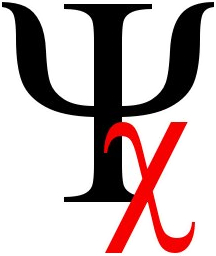In Defense of Sino-Roman
The Editorial Board of SpecGram†
Since the unveiling of the Sino-Roman script for English, our mailroom has been fairly overrun with, shall we say, commentary. Most of said missives fall rather short of the usual standard of “fit to print”, but we do feel compelled to respond to a few of the more rational discussants.
|
|
 Toon van Hal, 2010, “Moedertalen en taalmoeders”: Het vroegmoderne taalvergelijkende onderzoek in de Lage Landen, Peeters.
Toon van Hal, 2010, “Moedertalen en taalmoeders”: Het vroegmoderne taalvergelijkende onderzoek in de Lage Landen, Peeters.
Chiasmus of the Month
January 2017
|
|
|
|
|
A young Mr. J.S., of the agraro-mythical land of “Iowa”, suggested that “Sino-Roman” might better refer to those of Caesar’s citizens who had the universal nasal spreading which results from chronic sinus obstruction, rather than to a script for writing English. This is a tolerably reasonable suggestion, but we note that rhinophysioarcheologists long ago concluded that the prototypical Roman nose—invariably and inexplicably depicted as “aquiline”—was not susceptible to blockage, owing to its pathologically spacious passageways. Continuing along this line of thinking, though, we are now developing a new font, “Sino-Milwaukee”, for use in transcribing US Upper Midwest English, and we are much indebted (in a purely abstract, non-remunerative way) to this creative young reader.
A number of contributors are of the opinion that the element “Roman” in the name is incorrect; it should be “Sino-Latin”. A variation on this suggestion, proposed by no less than 2.5 individuals, was that the term “Sino-Latino” would be better, as the two elements of the compound ought (it was asserted) to agree. We find ourselves torn by this suggestion. Or rather, we should say, we find this suggestion itself rather torn; we have ripped it to gleeful scholarly shreds and cast it into the file of circularity.
Finally, we would like to say a word of response to those writers who suggested that Sino-Roman falls short of their personal visual aesthetic. Words such as “execrable”, “visceral illness”, and “just plain ugly” were common in these letters. To these few of our valued readers, we say, “who died and made you Divine Emperor and Pacificator of Scripts?” Historically, nearly all of the near neighbors of Sinitic Characters have adopted them for writing their own languages, whether Sinitic or not.‡ Clearly, the Sinitic script is an aesthetically superior one.
In sum, let us note that detractors of our innovation are on the wrong side of history, and will in all probability not be judged kindly for it.
乙口以也 乙工立巨 与工以口-尺口爪凡以!
P.S.: For those Windows and Macintosh users who can’t get enough of the Sino-Roman script, we are happy to provide Sino-Roman Keyboards.
† That is, a plurality of the not-necessarily quorum of editors able to attend the meeting scheduled at 23:59:60 UTC on December 31, 2016, in no way intended at all to circumvent the will of the Editorial Board in favor of any one particular Executive Editor—long may his seconds leap.
‡ The fact that these Sinitically-inspired scripts have generally fallen into disrepair (Japanese) or outright disuse (Vietnamese, Zhuang, and many others) most assuredly tells us more about the lack of tenacity of their users than about the scripts themselves.

